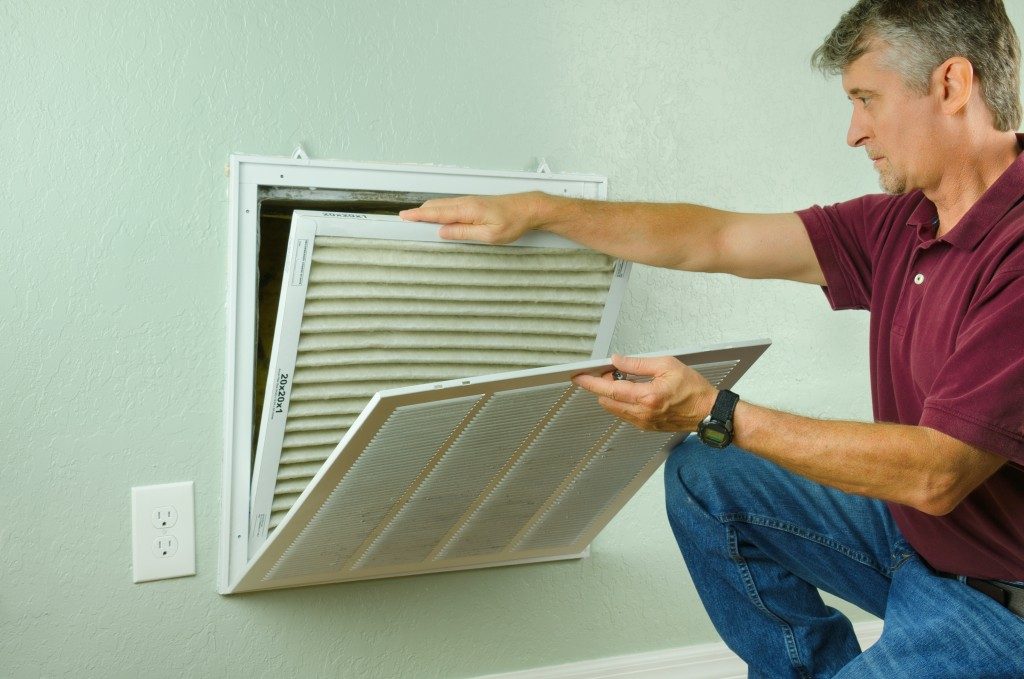The importance of good ventilation is the same everywhere, whether you are maintaining your present home or moving into a new one.
Proper ventilation is crucial, as it helps take out the dangerous gases, pollutants, and bad odours from your property. This way, everybody inside is safe from inhaling any of them (in short or long term). Other than that, ventilation is also necessary for your home because it helps prevent damage due to moisture.
What is ventilation?
Ventilation refers to the process of removing bad air and supplying fresh air to the indoors of any property. Bad air refers to anything unpleasant, like foul odours coming from your toilet, or dangerous, like polluted air that can be harmful to health.
The simple act of opening the windows for a supply of fresh air qualifies as ventilation. Installing exhaust fans in areas where you use water, such as the bathroom, laundry room, and kitchen, are also ideal for ventilation.
Home ventilation services are important in keeping properties energy-efficient, healthy, and safe. If you are not sure whether your home is properly ventilated, then you might want to consult the experts. Here are some ventilation types they recommend:
Supply-Only Mechanical Ventilation
The main component of this ventilation system is a fan that supplies the home with fresh air. Stale air leaves the room through air leakage sites and cracks. There are two ways of dispersing air into your home, and it could come through the ducted distribution system or directed to one location.
In essence, this system subjects the house to pressure, which is both desirable and undesirable. It is desirable in the sense that it prevents contaminants from finding a way into your home, and undesirable due to the risk of forcing moisture into the ceiling and wall cavities.
Exhaust-Only Mechanical Ventilation
 This happens to be the more popular method. It is characterised by a number of exhaust fans that operate intermittently or continuously to get rid of moisture and stale air. The good thing of such a setting is the creation of negative pressure that enhances the entry of fresh air through air inlets or cracks.
This happens to be the more popular method. It is characterised by a number of exhaust fans that operate intermittently or continuously to get rid of moisture and stale air. The good thing of such a setting is the creation of negative pressure that enhances the entry of fresh air through air inlets or cracks.
Balanced Ventilation
If you want better ventilation, this is the option to install in your home. Simply put, this system comprises of fans for both exhaust and inlet airflow. It offers more control in the sense that you can choose where each set of airflow will end up. In a ducted system, you deliver fresh airflow to bedrooms and living rooms and remove stale air from kitchen and bathrooms.
Balanced Ventilation with Heat Recovery
With the presence of the two types of fans in balanced ventilation, it would be even more worthwhile to find a way of having the exit air precondition the incoming air. This is possible through an air-to-air heat exchanger.
This device, which is also called heat-recovery ventilator (HRV), comes in handy for colder regions. A more developed version of this technology is the energy-recovery ventilator (ERV) that is capable of transferring not only heat, but also moisture. It controls humidity levels superbly during both winter and summer.
There are advantages and disadvantages for each ventilation option, so the choice is up to you. After analysing the technologies with your home ventilation services, you will find a solution that works best for your case.

